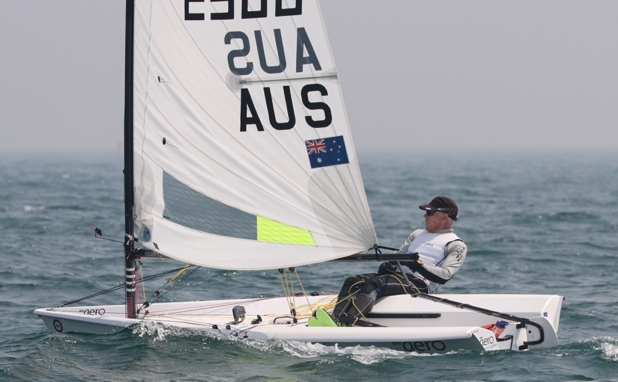
Welcome to the International Class Association website for the RS Aero. Here you will find all there is to know about the RS Aero including the latest news, how to register your boat, and links to relevant documents.
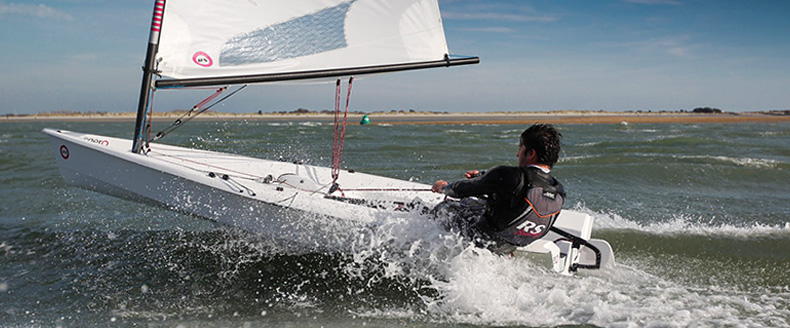
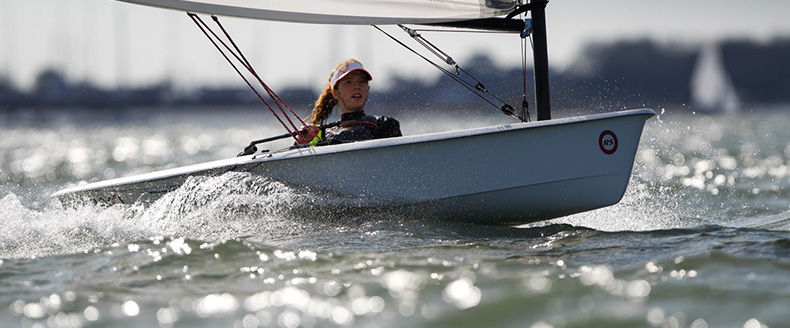
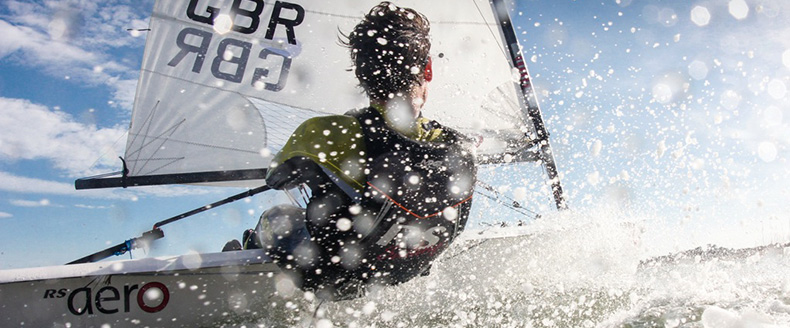
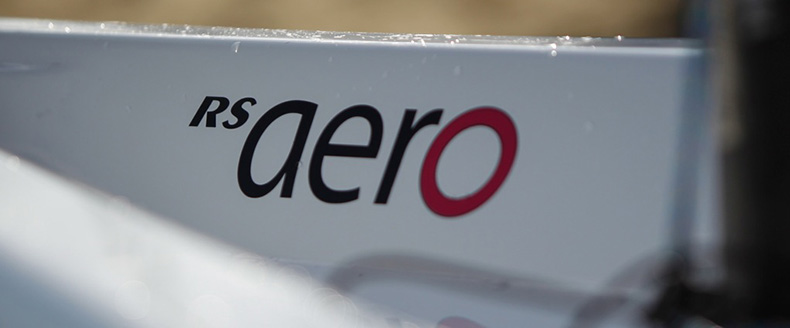
| Home >> Sailing Tips & Technique >> Down wind sailing |
A recent discovery for me, sailing downwind in strong 25 to 30 knot winds is that the faster you go the more stable and easier it is. It was initially surprising how far back you have to sit to keep the bow out of the water. Right at the back with the back leg under the tiller. Once you have positioned yourself correctly, you can then really go for it. Don't back off. Commit to go faster, and the boat just becomes more stable. Power the rig up, work the boat and sail, and have just small steering movements. For me on that day at Rutland I was skipping across the top of the waves quite happily on a very broad reach, stable and in control. Very exhillerating.
Reply
Reply
21/02/2016 22:09:18
schnakvanopen
Posts: 2
Well done Jonathon Rickels, great topic on something that I'm sure has a lot of development to go.
Can I throw a few things out there for discussion and I need to emphasise that I may be way off.
Recently we have had the opportunity to spend a lot of time in heavy air and downwind has been pretty exciting.
The one thing that I've come to conclude is the need to be so physical in the boat, the ongoing body movement and trim adjustment to maintain maximum speed is really important. Plus, just to stay upright demands a lot of work. This will add another element to be at the pointy end of the fleet - fitness. In my opinion this is very good for the class albeit, I need to do a lot of work.
Regarding mainsail trim, I still believe trimming it properly is far faster and safer, I'm not an advocate for over trimming to maintain stability. In my mind that's just putting the brakes on and loading things up which can lead to all sorts of complications.
Keep it free and keep it fast and keep an eye on the wave in front as that's the main reason for directional change. Jibing while surfing is important and relatively hassle free.
Overall improve and performance comes from practice, practice, practice.
I hope to post videos soon.
Brian.
Reply
Reply
21/02/2016 07:33:44
Brian
Posts: 20
Recent strong downwind mishaps of Martin Hewitt & Nigel Rolfe published on Facebook plus my own several started me wondering whether techniques I'd learnt on a Dinghy Instructor course & Catamaran sailing would be applicable to sailing the Aero better in these conditions?
Dinghy Instructor Course:-
I did my assessment in wind gusting over 30 mph in a 2000. Controlling speed downwind was by sitting well back and sheeting in the main hard; such that flow over the mainsail reversed!!
To ease sheet pressure & maintain trim, prevent the bow sinking, required a flat sail and straight leech; ie precise sail tune: cunnigham off, outhaul max out for flat sail, kicker set for straight leech - neither curl nor twist off in the upper part.
Now I'm sure this can be done in the Aero, but to transition rapidly to this mode of sailing from the usual downwind mode: boom out, outhaul & kicker set for max depth, curvature in the sail, crew forward & centered is just not going to happen when a slammer comes through - witness Martin.
However if you're already sailing downwind Catamaran style, continuously heading-up onto a broad reach & then bearing away, i.e. playing the boundary between reaching, normal airflow over the sail, and running, then the transition will be much easier: crew already on side deck and aft, boom already part in, in expectation of strong gusts sail already tuned for less depth, flat, similarly kicker tuned for straight leech.
The Aero does not have a significant reserve of bouyancy forward from the mast step, similar to catamarans; so possibly this way of sailing downwind maybe the way to go?
Another question would be: at what wind strength would broad (deep ?) reaching downwind be faster than running? Strong wind survival conditions, or moderate to light?
Comments, particularly trial results would be a welcome addition to the Aero sailing technique body of knowledge.
Reply
19/02/2016 15:54:32
Jonathan Rickels
Posts: 104
Light winds at Island Barn yesterday as well. Running is tricky - I'm slowly becoming convinced that by the lee is faster but you have to go quite a way to get a good reverse flow and then you can sneak back downwind a bit keeping the flow.
Getting the sail to go well forward is tricky, I've got one of the older mains without the elastic bolt rope so I often manually help the downhaul release (want to be well forward in the boat anyway). I usually find I need to ease the kicker right off to get the rig to go forward and help the downhaul release, then add just barely enough kicker to remove that diagonal crease.
Watching the wind direction and for wind lanes is then more important than anything else. Seems to be competitive with other classes but I don't have another 9 to sail against yet.
Reply
05/10/2015 09:03:54
Gareth
Posts: 170
Just had my first day's racing in 1741. Not much wind at all most of the time. Upwind I was fine and competitive. Downwind I was not. I was on pretty much a dead run (hadn't read the "by-the-lee" posts at that stage). I had enough kicker on to take out the vertical crease at the front but virtually no cunningham. I'd be grateful for your views on the best approach to sail tirm for a run.
Thanks in advance,
Ivor K
Reply
04/10/2015 20:41:21
IvorK
Posts: 4
Wow!
There's a lot to digest and even more to make work!!
Many thanks guys, that was brilliant.
CliffW, (Plymouth Sound)
Reply
21/05/2015 17:08:49
Clemphoto
Posts: 5
Agree with Brian.
We just had our first Aero regatta and some Lasers joined in too.
Sailing by the lee when under 10 knots was fast. Faster than broad reaching by an equivalent amount from dead downwind. But you need to move, just like in a Laser. Don't just sit there. Heel the boat to weather, but not too much. The Aero doesn't like that. Then trim the main using the aft 2 lines. i.e. directly from the boom with a light touch. Ease a little, bear away deeper by the lee and the boat will heel a touch more. Look for a low spot in the waves and then flatten and got straighter to the mark. Then repeat. Be gentle and don't rock the boat too much in light air as it will disturb the flow.
Look for an opportunity to broad reach if the wind shifts to get you back closer to the rhumb line. Your speed can really jump if the wind shifts to the windward side and you get a good angle to reach a little. But it is very easy to come up to high and sail too long a distance. So be careful.
Reply
18/05/2015 16:26:17
mob
Posts: 38
Hello from Downunder.
Great topic and one that will see a lot of development in the next 12 months in my opinion.
I have spent some time on this recently and have also had many years on a Laser.
Due to the different hull shapes (chines), the Aero requires more rudder than body weight to slide downwind into a by-the-lee position. Plus, the chine also resists windward heel. Both these elements create drag and less speed and I'm yet to determine if a better VMG is gained. These elements are also just some of the reasons I love the Aero as I want to get as close as I can to apparent wind skiff style sailing. Having said that, to have the ability to sail by the lee for tactical reasons is a big advantage and the Aero does it well.
In anything under 15 knots the Aero sails smoothly by the lee. I can confirm that in 20 plus it's a handful by the lee (or you just need a better pilot). But also, in 20+, to sail 10 degrees higher than directly downwind is very fast, stable and a whole lot of fun. This also excites me as when fleets develop downwind tactics/angles are going to be vital and great viewing.
So, to summarise my opinion, yes the Aero sails well by the lee, but time will tell if it's worthwhile.
Cheers
Reply
Reply
18/05/2015 14:19:58
Brian
Posts: 20
I've recently come to the Aero from a laser, so I'll put the question more simply, (hopefully for some response). Am I doing wrong, sailing the Aero by-the-lee downwind?
Cliff W.
Reply
18/05/2015 12:24:43
Clemphoto
Posts: 5
The other day Laser sailors at my club advised me to sail by the lee when travelling down wind. For the Aero how does this compare with sailing square or tacking down wind the way some skiffs do?
Cliff
Reply
15/03/2015 20:40:18
Cliff
Posts: 47






